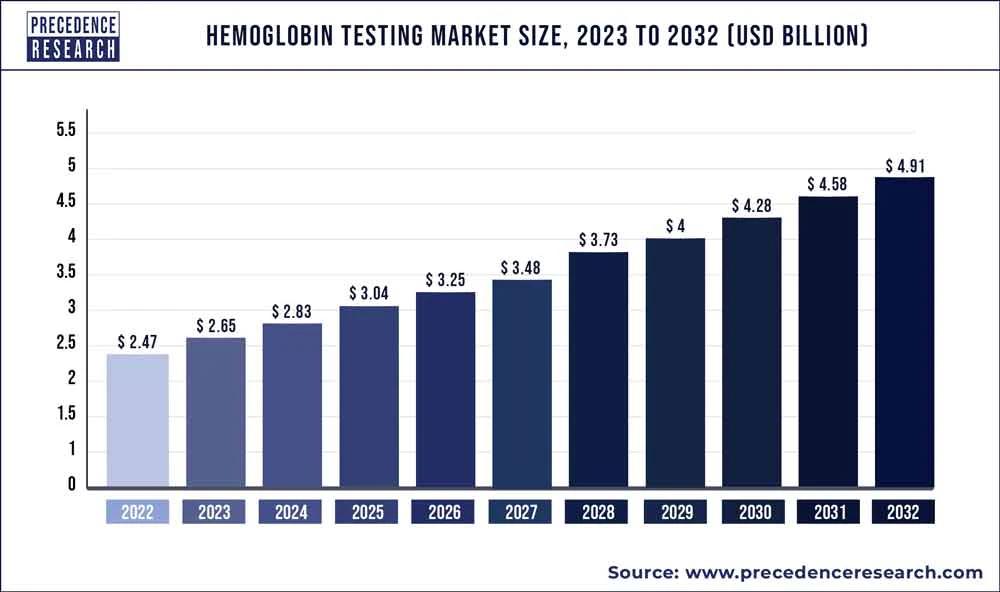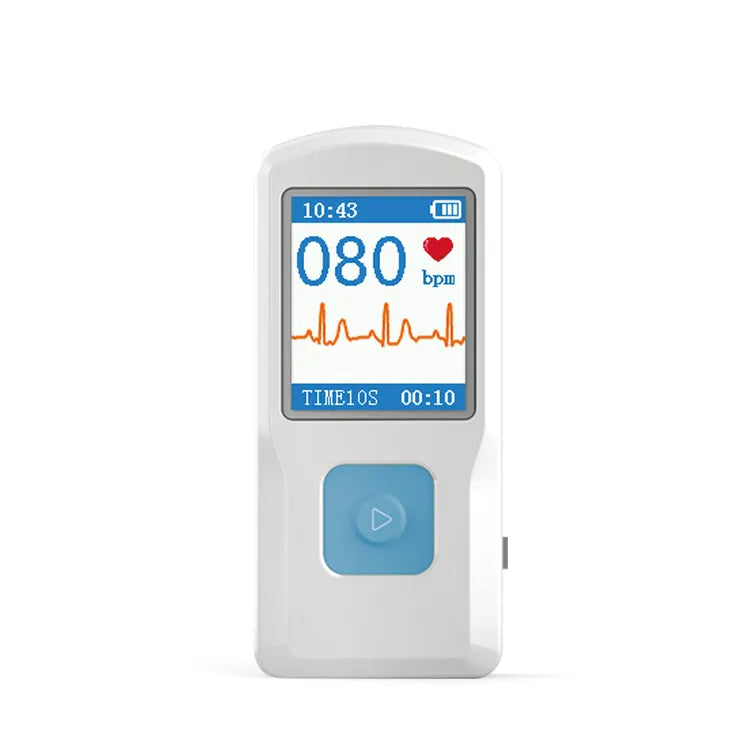Promising Outlook: Portable Hemoglobin Meter Market

Before delving into the portable hemoglobin meter market, it's important to understand the significance of hemoglobin in healthcare.Hemoglobin is a protein found in red blood cells that plays a crucial role in transporting oxygen from the lungs to the rest of the body.According to the World Health Organization (WHO), anemia is defined as hemoglobin (Hb) levels <12.0 g/dL in women and <13.0 g/dL in men. Anemia is a significant public health concern affecting both developed and developing nations.
According to statistics, nearly 1.6 billion people worldwide suffer from anemia.In response to this global issue, numerous governmental bodies worldwide have initiated comprehensive initiatives to raise awareness about the adverse effects of anemia.Monitoring hemoglobin levels is vital for diagnosing and managing a range of medical conditions, including anemia , which affects millions of people worldwide.
Which groups of people will be affected by anemia

- Women of Childbearing Age: Women, especially during pregnancy and menstruation, are at a higher risk of anemia due to increased iron requirements. Heavy menstrual bleeding and poor dietary choices can exacerbate this risk.
- Infants and Children: Rapid growth in infants and children demands a sufficient supply of iron, and any deficiency can lead to anemia if not addressed.
- Elderly Individuals: As people age, their bodies may have more difficulty absorbing nutrients, including iron, which can increase the risk of anemia.
- Individuals with Chronic Illnesses: Conditions such as chronic kidney disease, inflammatory disorders, and certain cancers can interfere with the body's ability to produce or utilize red blood cells, leading to anemia.
- Vegetarians and Vegans: Individuals who follow plant-based diets may be at a higher risk of anemia, as plant-based sources of iron are not as easily absorbed by the body as animal-based sources.
- People with Gastrointestinal Conditions: Conditions like celiac disease, Crohn's disease, or gastric bypass surgery can affect the absorption of nutrients, including iron, leading to anemia.
- Athletes: Intense physical activity can increase the body's iron requirements, and some athletes may be at risk of developing anemia if their dietary intake doesn't meet these demands.
- Individuals with a History of Blood Loss: Those who have experienced significant blood loss due to surgery, trauma, or gastrointestinal bleeding are at risk of developing anemia.
- People with a Family History: Anemia can sometimes have a genetic component, so individuals with a family history of anemia may be more prone to the condition.
Global portable hemoglobin meters' market trends from 2023 to 2032
In 2022, the global hemoglobin testing market was valued at USD 2.47 billion. It is projected to reach approximately USD 4.91 billion by 2032,experiencing significant growth at a CAGR of 7.10% from 2023 to 2032.

Global Iron-Deficiency Anemia Therapy Market

- By geography, The Europe region is predicted to grow by 5.9% over from 2023 to 2032.
- By product, the point of care segment generated more than 82% of revenue share in 2022.
- By technology, the spectrophotometry segment captured the largest share from 2023 to 2032.
- By end use, the hospital segment is expected to grow considerably at a CAGR of 5.74%. from 2023 to 2032.
Emerging Trends and Key Drivers in the Portable Hemoglobin meter
1. Increasing Chronic Disease and Diabetic Patients

2. Policies for portable hemoglobin meter contributing to market growth

3. The revolution of portable hemoglobin meter
offering a promising outlook for both healthcare professionals and patients alike.
4. Hemoglobin testing meters' market trends by end users
Hospitals are expected to experience significant growth during the forecast period.This is attributed to the increasing number of people seeking medical care in hospitals for the diagnosis of various diseases.Hemoglobin counts are crucial for accurate disease diagnosis, and doctors often refer to them before initiating treatment.Diagnostic laboratories represent another significant market segment for hemoglobin testing systems.These laboratories are projected to drive demand for hemoglobin testing systems in the future due to the adoption of new diagnostic technologies and substantial advancements in the market for such systems.
Market growth and future outlook for hemoglobin meters

-
Accessibility: Portable hemoglobin meters are user-friendly and can be used by healthcare professionals in a variety of settings, from clinics and hospitals in a variety of settings, from clinics and hospitals to remote or underserved areas.
This accessibility ensures that a wider population can receive timely testing and treatment. - Speed: Traditional laboratory testing can take hours or even days to deliver results.Portable meters provide instant readings, enabling immediate diagnosis and treatment decisions, which can be critical in emergency situations.
- Cost-Effectiveness: By reducing the need for expensive laboratory equipment and personnel, portable hemoglobin meters can lower healthcare costs for both providers and patients.
- Patient-Centric Care: Patients benefit from the convenience and reduced discomfort associated with portable meters.Monitoring hemoglobin levels becomes less invasive and more patient-centric.
- Preventive Care: Portable hemoglobin meters make it easier to track changes in hemoglobin levels over time.This allows for earlier detection of conditions like anemia, facilitating more effective preventive care.
The Medasia hemoglobin meter
- Effortless Hemoglobin Testing: This portable hemoglobin meter simplifies the process by requiring just a tiny 10µl blood sample, making testing easier and less invasive.
- Seamless Connectivity: With built-in Bluetooth capabilities, this device can be used conveniently at home or in clinical settings, allowing for remote monitoring and data sharing with healthcare professionals.
- Precision at Your Fingertips: Engineered to provide precise results swiftly, this hemoglobin meter ensures accuracy, helping both patients and healthcare providers make informed decisions about treatment and care.
- Hygienic Operation: Prioritizing user safety, this meter is designed for hygienic operation, reducing the risk of contamination during testing, a crucial factor in healthcare settings.
- Feature-Rich Design: This cutting-edge hemoglobin meter incorporates the most extensive and user-friendly features ever seen in such a device, making it accessible and convenient for a wide range of users, from patients to healthcare professionals.

For a deeper understanding of this product, we encourage you to explore this article : Hemoglobin Meter: Let's help people to monitor anemia
WE RECOMMEND
Related posts
- Subscribe MedInsights
- Subscribe MedInsights
- Subscribe MedInsights
- Subscribe MedInsights
- Subscribe MedInsights










